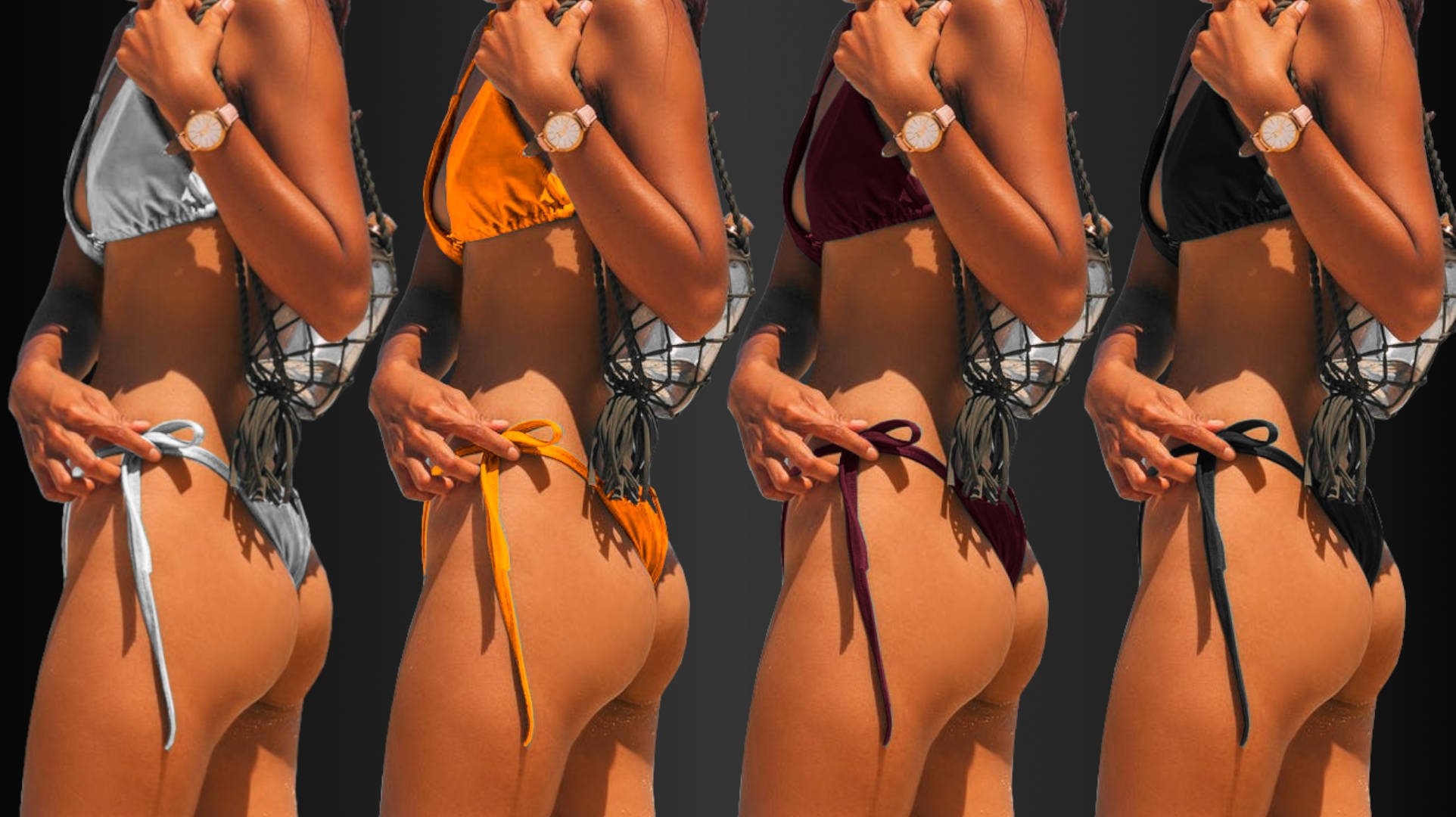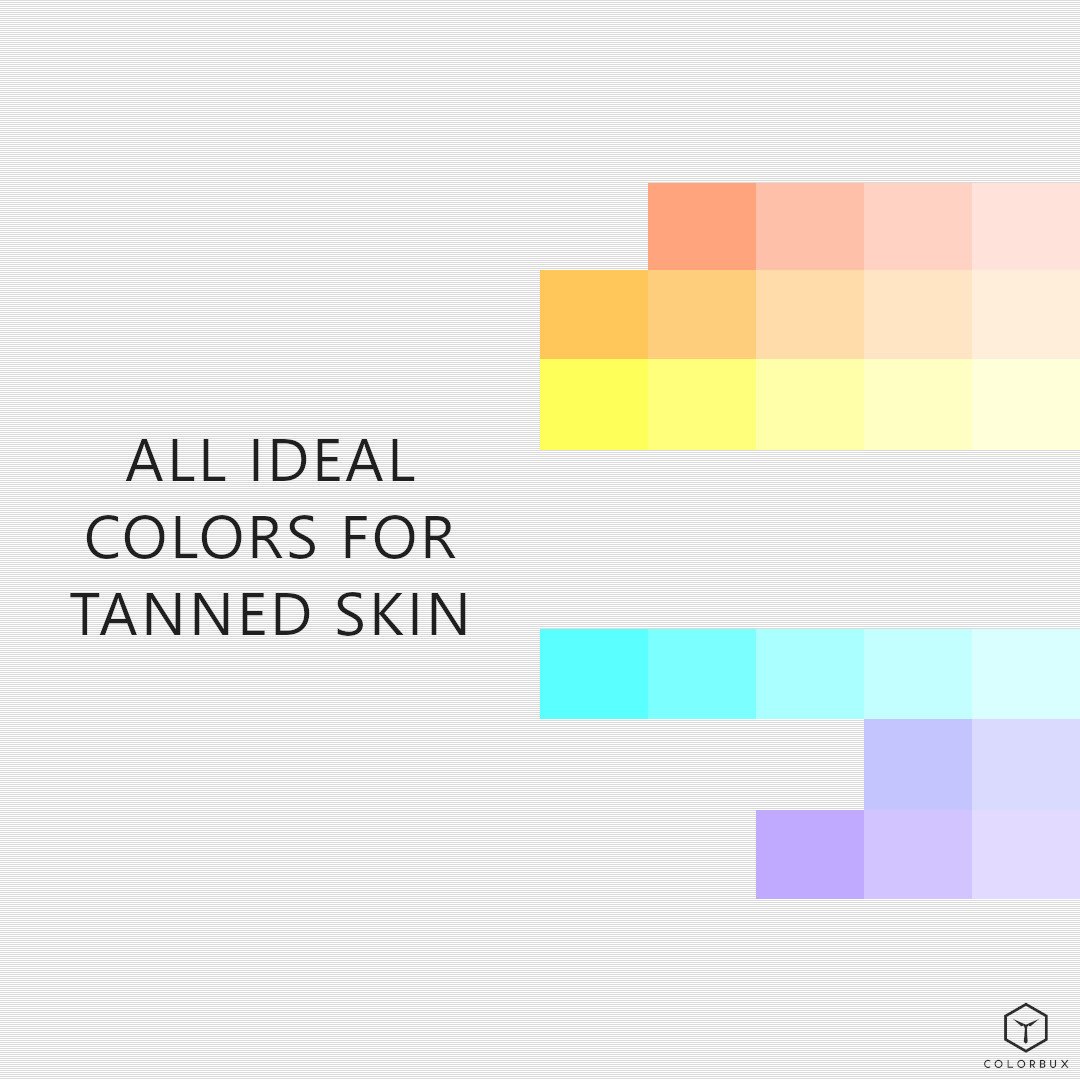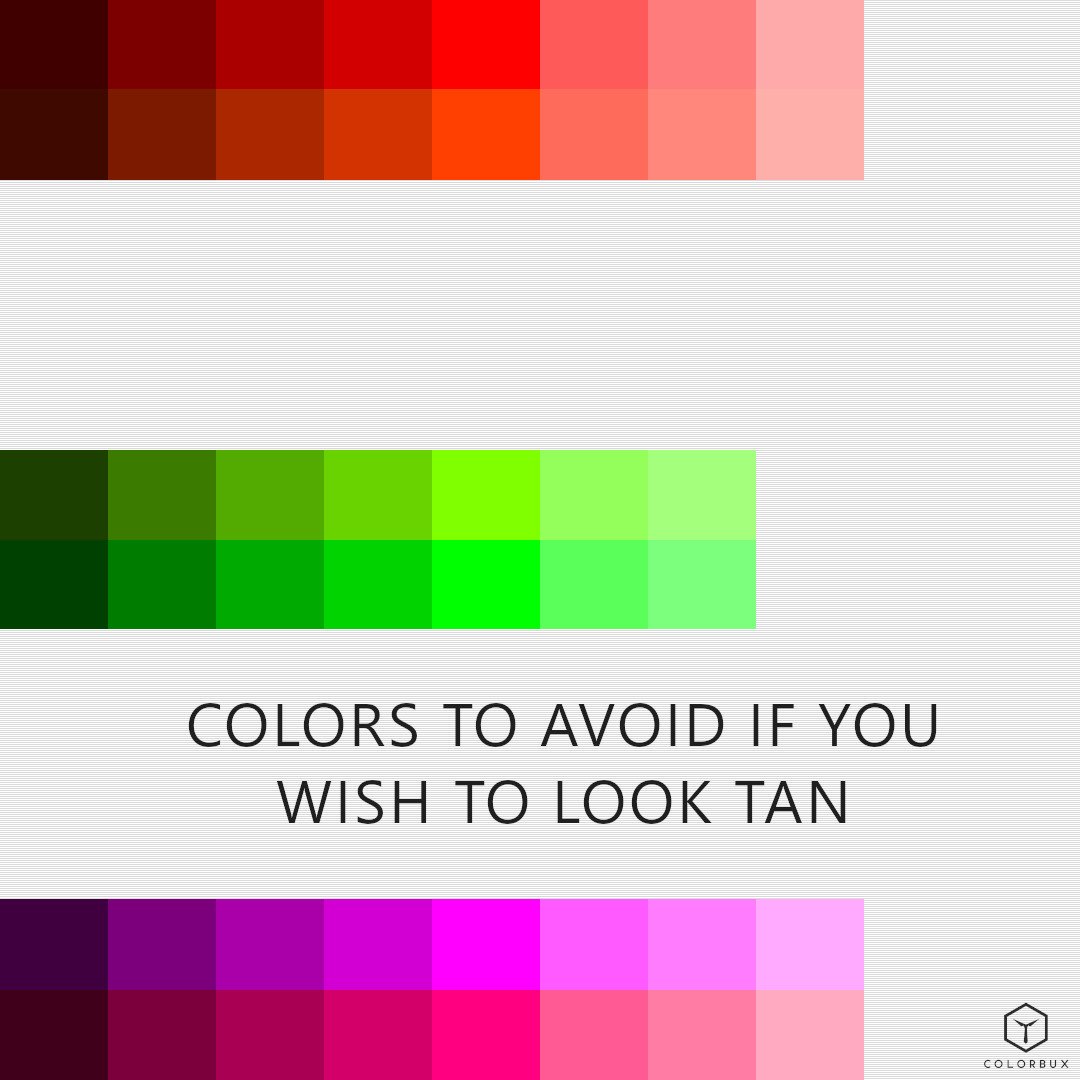Clothing Colors That Make You Look Tan
There are many different clothing colors that help you achieve a natural-looking tan when you're a bit heavy on the "pale scale". But, which colors best help you have a more colored complexion? Well, let's find out.
Clothing colors make a huge difference on your complexion. If you have quite fair skin, then lighter clothing, which are white or pastel-colored, may not make you look as bronzed as you might think. This is due to the lack of contrast with your skin tone.
Conversely, if you’re already slightly tanned or have naturally olive skin, then the opposite can be the case! Weird, right?
What to Wear to Look More Tanned
Clothing colors that enhance a natural tan are those that complement and contrast brown. Those are colors like orange, yellow, red-orange, teal, turquoise, lilac, blue-purple and various light pastels. It’s typically best to wear clothing that is significantly lighter than your skin if you wish to look tanned. Make sure the contrast to the tanned skin is just right, though.
Yes, it’s not easy to pick out the right color to make you look tan. There are many different solutions (luckily), so strap in and let us tell you what you should look out for when trying to enhance your natural tan.
How to Enhance a Tan Using Color
The only thing better than a nice tan is a healthy, natural looking one. The great news is that achieving one can be as easy as choosing the right clothing colors.
You might not think that the color of your clothes make such a difference in how you look, but it does! And it's not just about light or dark clothing either - what matters most is the contrast between your skin and the color of your clothes.
Complementary Colors to Tan
One way to achieve contrast to your skin tone is by choosing colors from the complementary side of the color wheel.
Orange’s complementary color is blue and its split-complementary colors are blue-green and blue-purple.
For tan (a light tone of orange) it means that you pick a color that is on the cold side of the color wheel. We suggest opting for colors such as turquoise, teal, mystique purple, or lilac.
Typically, going full complementary (blue) can yield mixed results. Especially if you have pale skin, blue isn’t the ideal choice. We explain why in our full article on the best clothing colors for fair skin.
If you are quite tanned, though, then a bold, strong blue may actually do the trick. Just always pay attention to the contrast of luminance. Don’t know what we mean? Let us explain.
Contrast the Lightness of Your Skin
Something light on something light makes both things look light, right?
Man, we should write more poetry (not)…
The same goes for things that are dark. But guess what? This is true until it isn’t anymore. Let us show you what we mean:
A super bright gray next to pure white looks very light as well. You can obviously tell the difference between the two, but you’d consider both to be very light colors.
If you put white next to a slightly darker tint of gray, you suddenly notice a large difference and the gray seems rather dark.
Hold up the same gray tint next to pure black and you suddenly realize that the gray you thought was dark is effectively still extremely light.
You see? Light is light, and dark is dark – until it isn’t. This is the power of contrast.
Anyway, enough theory for now – back to the topic of how to make skin look more tanned.
Now that you know the logic behind contrast, the following might be a lot clearer:
If you want to look more tanned, you must make your skin seem not only browner but also darker. To do so, your clothing has to be lighter than your skin tone. Significantly lighter, to be exact.
To make your skin look darker, you must make it seem darker than what you’re wearing by opting for lighter colors that contrast the lightness of your skin enough, yet not too much.
However, this is a problem if you have very light skin. Then wearing similarly light clothing has the opposite effect. More on this later in the article. At least now, thanks to the color theory above, you know why.
Analogous Colors to Tan
Colors that are to the left and right of tan (orange hue) are considered analogous. Analogous colors enhance each others’ coloring because they are similar enough, yet not indistinguishable.
Do you remember what we said about contrast of lightness? Well, the opposite applies to contrast of hue.
To enhance coloration, you either go complementary (we’ve covered that), or you lean towards the analogous side of the spectrum.
Applied to tan, this means:
To make your skin look browner, you must enhance its coloration by wearing very similar or very different colored clothing. Anything in between won’t cut it.
Which color bikini makes the model’s skin look most tanned?
Ideal Colors to Wear to Look More Tan
Now we know that to look tanned, you should wear colors that are
significantly lighter than your skin tone and
either very different or rather similar to its hue.
This gives us quite a spectrum of clothing colors to work with. Sadly, there are some very common colors you might have to cross off your list of favorites if you want to look like you’ve spent some time in the sun.
Some perfectly good choices for tanned skin include:
Skin
Light Orange
Light Yellow / Sunshine
Aqua
Light Blue
Light Lilac
Less Ideal (But Still Viable) Colors to Wear
Less ideal colors to help you look tan are those that fit only one of the two criteria above and are either
significantly lighter than your skin tone or
either very different or rather similar to its hue.
These are colors like red- or green-infused pastels (too little/much hue-contrast) or any type of dark color (not lighter than skin) that is either on the orange/yellow side or the blue side of the color wheel.
These colors include:
Light Pink
Rose
Lavender
Lilac
Light Green
Lime
Chartreuse
Blue
Navy
Teal
Blue-Purples
Brown
Rust
Mustard / Olive
Be Careful with These Picks
There are three colors you should be careful with when trying to look tan. Heads up: It’s important to not wear too much of them.
Pink: Though often a great choice for clothing; when it comes to looking tan, you should think twice. Pink can make you look sunburnt rather than tan because it brings out the red in your skin undertone. The same goes for any other type of red, by the way. More on that later, though.
Baby blue: One of the easiest colors to wear any time of the year. But sadly, most baby blues are too dark to help you look tan. Don’t believe us? Well, blue is the color with the lowest amount of luminance. You’ll have to add a lot of white to blue to make a baby blue that is light enough to be lighter than your skin tone. That said, very light blue does actually work.
Black: The most common clothing color is one to maybe avoid when you’re trying to enhance your bronzed glow. Firstly, it is obviously darker than your skin, so it can’t help it look darker. And secondly, it just doesn’t fit the picture. Black just doesn’t give you the feeling of “sunshine” and “beach”, does it?
This is actually quite a pity because black is the color that hides sweat stains the best of all. Luckily, white isn’t that bad either.
Though all three of these colors are staples in clothing and fashion, none of them are good at enhancing a natural tan. Stick to other colors and you’ll do a lot better.
Can White Make You Look Tan?
White is often also a viable “color” to help you look tan – but not always. We purposefully put it in a category of its own because it can be a seriously sub-optimal choice for those of us who lack skin coloration.
In other words: white is bad for pale folks.
Why? Well, if you have fair skin, white is simply too similar when it comes to lightness. Plus, it lacks any coloration, so it can’t enhance (or reduce) any of your skin’s natural undertones.
And though this can be a good thing, it often is something to avoid.
As soon as you are tanned enough, white becomes a very good choice. This is because of the now apparent contrast (obviously).
So, if you can already boast a nice suntan, then go for white clothing. It’ll make your skin look super bronzed.
Colors to Avoid if You Want to Look Tan
If you want to avoid diluting your tan, then shy away from colors that fit none of the two criteria we’ve been talking about in the past few paragraphs. Avoid colors that are both
similar to or darker than your skin tone
and are on the red or green side of the color spectrum.
Classic jewel tones will look great when you’re pale – there’s no doubt about that – but they’re not ideal for highlighting a tan.
Red brings out the redness of your skin which, in turn, makes you look sunburnt rather than bronzed. The same goes for green. Being the complementary color of red, it highlights the red of your skin rather than the brown.
Darker colors also make your skin appear lighter than it most likely is. This is due to contrast – we’ve established that a few times in this article, haven’t we?
Colors to absolutely avoid if you wish to look bronze:
Muted/dark red
Purple
Forest green
Muted/dark green
Classic green camouflage wear
Short Summary
In this article, we explored some different colors of clothing that can help with enhancing a tan. It only takes a few well-placed colors and you’re good to go.
So now that you know some of the colors that can help you achieve a more tanned look, try incorporating them in your wardrobe. You may surprise yourself with how much better something as simple as a light-yellow shirt, for example, can bring out that bronzed glow you’ve been aiming for.
Gold and yellow are both warm colors that complement your complexion if it has a grayish cast. Other forms of bright and light orange have a similar effect.
Light and bright colors from the other side of the color wheel complement a natural bronze tone well and bring out the orange in your skin making you look tanner.
The key to looking tan is to have enough contrast between your skin tone and the color you're wearing. In order to achieve this, you need the right color clothing. Simply wearing a color that is just a bit lighter than your actual skin tone won't work wonders.
This is why you need light and bright colors from either the orange or the blue side of the color wheel to enhance your tan.
And with that statement we end our article on the topic and wish you all the best showing off that smashing tan of yours. If you’d like to read more about color in fashion, read up on our articles by clicking the button below or sign up to our member letter to get a few emails a month updating you on the latest tips and tricks in the world of color.
RECENT ARTICLES:

















